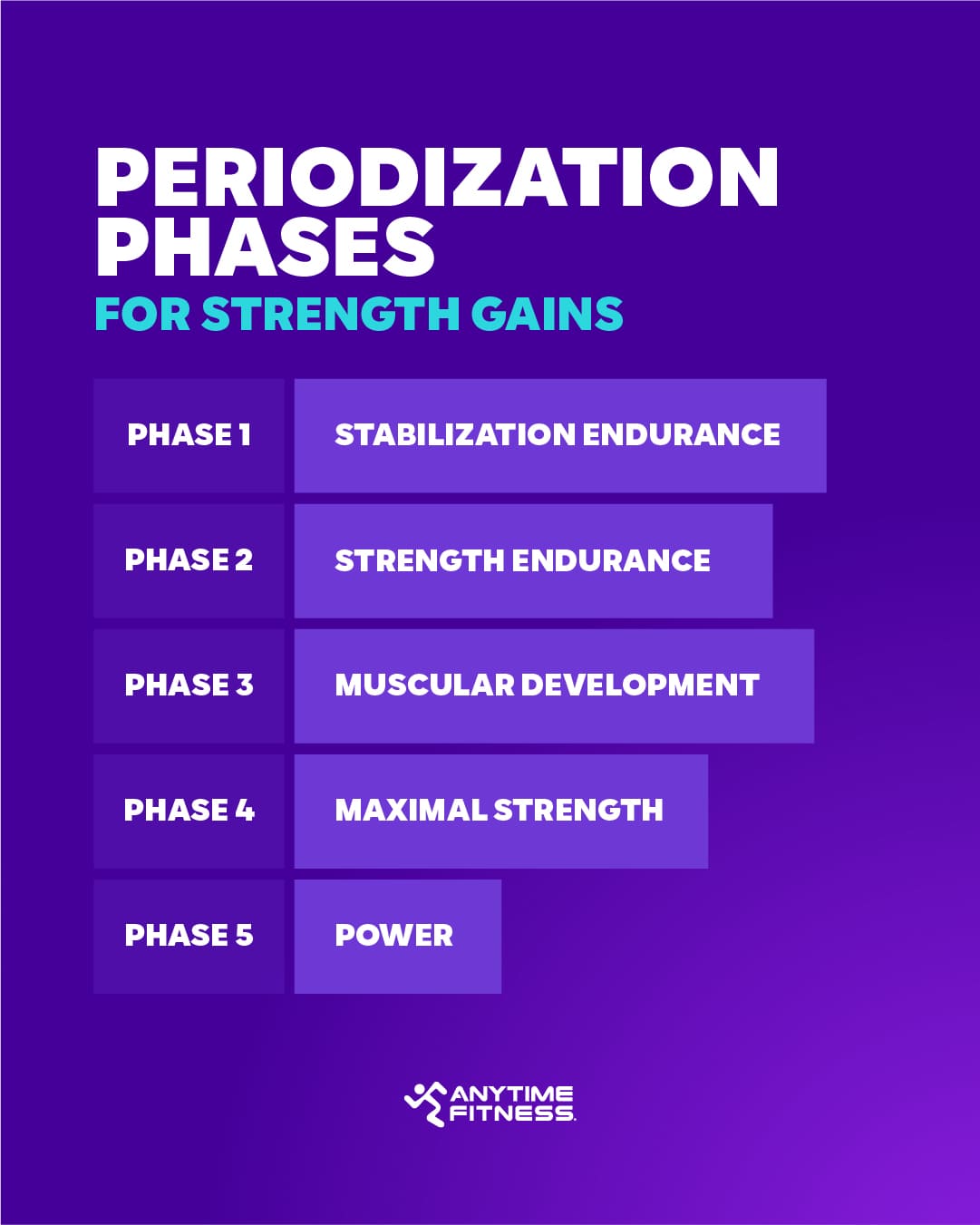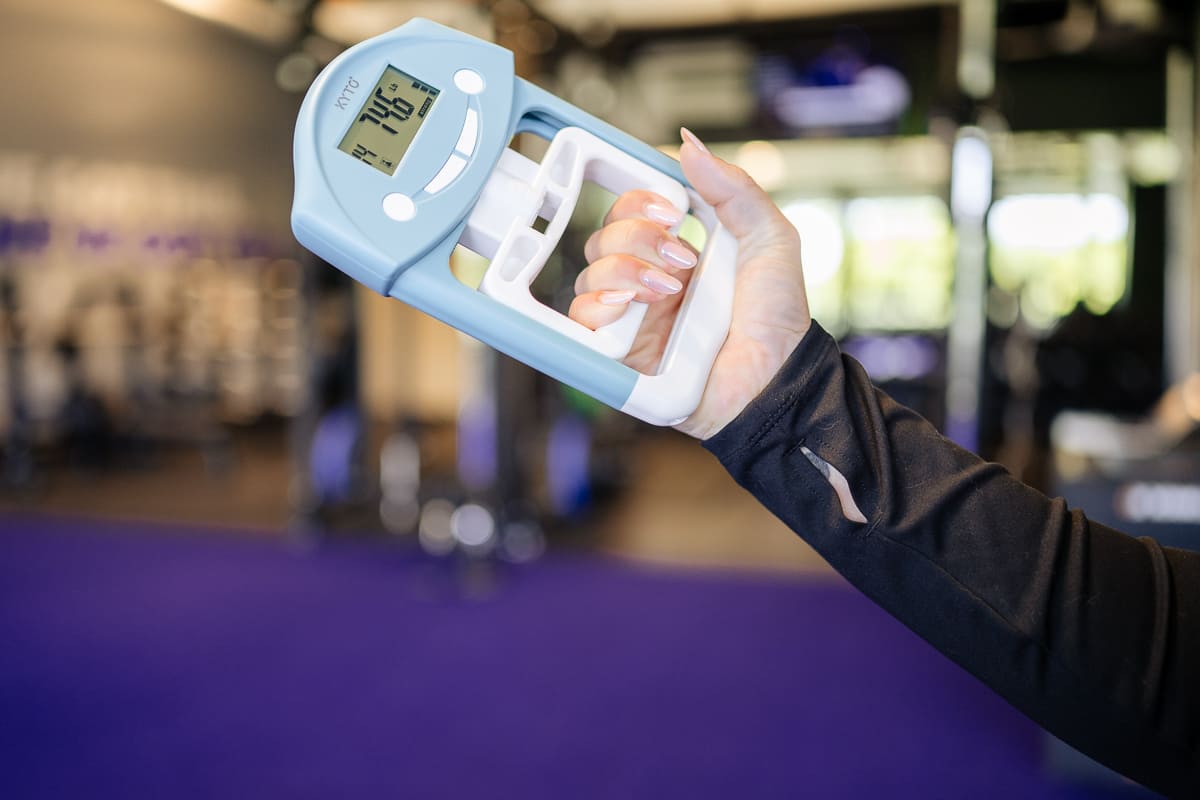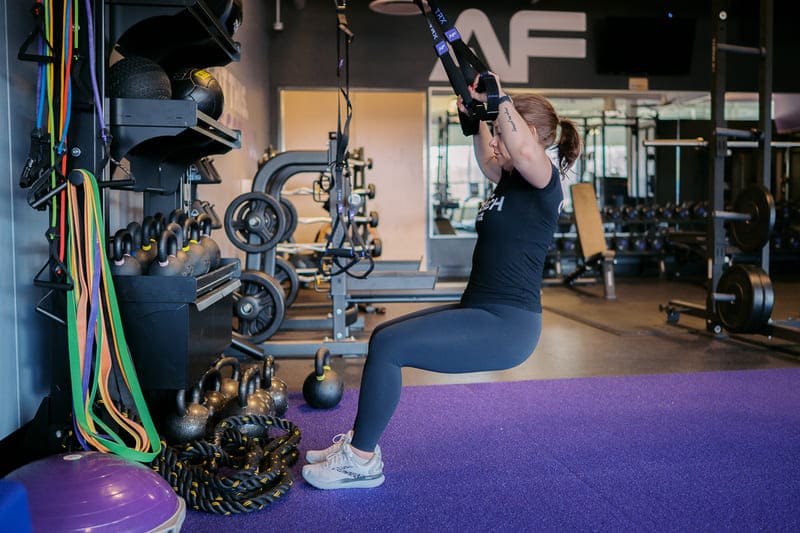What’s your reason for weightlifting — to look leaner, lift heavier, get stronger, or bulk up? There are so many reasons for resistance training, and there are just as many ways to do it. But is your training plan aligned with your fitness goals? Your workout split (and the reps, sets, and volume of each workout) can vary based on your desired outcome, whether it’s building muscular strength or bulking up and increasing muscle size. Let’s talk about hypertrophy vs. strength training — and how to determine which training format is best suited for your fitness goals.
We’ll cover:
- How to train for strength and hypertrophy
- How to choose between strength training and hypertrophy
- Sample strength and hypertrophy workout splits
Hypertrophy vs. strength training: What’s the difference?
Strength training and hypertrophy training have similar principles, but the key differences lie in the weight and number of reps per exercise. Strength training typically requires heavy weights and lower reps, while hypertrophy training requires moderate weights and higher volume. The other key difference: your personal strength goals (more on that later!).
Before we get too deep, let’s recap the five phases of periodization training, which will guide your training plan for hypertrophy and strength training:
- Stabilization endurance: Using light to moderate weights and high rep ranges with a focus on core stability, endurance, and proper posture.
- Strength endurance: Performing supersets with short rest periods to build muscle and boost stamina.
- Muscular development: Using moderate weights, increasing volume, and doing more exercises per body part to encourage hypertrophy.
- Maximal strength: Focusing on low reps and high-intensity sets to increase your one-rep max.
- Power training: Combining heavy weights with high-powered movements to exert maximal effort in the shortest amount of time.
Each training phase builds on the last to ensure healthy, well-rounded muscle development.

Now, let’s dig deeper into the differences (and overlap) between strength training and hypertrophy.
Strength training: Muscular strength and endurance
Strength training involves lifting progressively heavier weights to get stronger. If you’re training for muscular strength, start by cycling through phases 1-3 (stabilization endurance through muscular development) and lifting heavy weights in the 1-5 rep range before progressing to heavier weights.
Do muscles get stronger even if they don’t grow?
Yes. Muscular strength isn’t all about physical size; it’s also about neuromuscular coordination and efficiency (in other words: mind-muscle connection). Muscles can be strong while being small and compact, and conversely, larger muscles can be bulky without packing much strength. This is due to the mind-muscle connection, or your nervous system’s ability to recruit the proper muscles for a movement — the stronger the mind-muscle connection, the more efficient the lift.
Hypertrophy: Muscular size
Muscular hypertrophy is the enlargement of the muscle tissue (think: visually larger biceps or quads), and typically involves cycling through phases 1-3 to increase muscular size. Hypertrophy training includes increased volume (sets) and intensity (using moderate to heavy weights) compared to strength training.
What triggers hypertrophy?
While there are no specific hypertrophy exercises, hypertrophy requires a few workout parameters that are slightly different from strength training. These include:
- Increased volume
- Moderate to heavy weights
- 6-12 reps per set
The other key factors are proper nutrition, good sleep and recovery habits, and a healthy hormone balance. According to the National Academy of Sports Medicine, muscle hypertrophy and regeneration is thought to be the result of insulin-like growth factors (IGF), testosterone, and growth hormone secretion, which is triggered by exercise.
What’s the best rep range for hypertrophy?
To increase muscle mass, choose between 3-6 sets with 6-12 repetitions using a moderate tempo and 2-4 exercises per muscle group. With a larger workout volume, muscles will increase in size even if you’re not lifting heavier weights.
If you’re building muscular endurance and mass but not getting stronger, it may be because you’re not lifting progressively heavier weights at the maximal strength training level (phase 4). Remember, the body adapts to what you put it through, so if your goal is to get stronger, then implement strength training and aim for 1-5 reps per set.
Is it better to train for strength or hypertrophy?

When it comes to choosing between hypertrophy vs. strength training, there isn’t a one-size-fits-all answer. Consider your personal health goals and how you like to lift. If you’re comfortable with the loads you’re lifting but want more definition and reduced body fat, hypertrophy training is the way to go. If your goals are to become stronger and lift heavier weights (think: hitting a new PR or being able to carry a heavy suitcase more easily), add maximal strength training (phase 4) to your weightlifting program after you’ve cycled through phases 1-3.
Hitting a plateau in your results could be a sign that it’s time to change up your weightlifting routine. For example: incorporate new forms of resistance training or add maximal strength training to your training plan for a few weeks.
Note: No matter which type of exercise you prefer, resistance training of all kinds has been shown to improve bone density and improve cardiovascular health, according to the American Heart Association. Training for maximal strength is particularly beneficial for the bones in the hips, spine, and wrists.
Sample strength training and hypertrophy workout schedule
Now, it’s time to put it all into practice. Combining hypertrophy training and strength training in your routine can give you a balance of muscular strength, size, and endurance — along with variety. A weekly workout split with three full-body workouts per week could look like this:
- Monday: Muscular endurance workout
- Wednesday: Hypertrophy workout
- Friday: Strength training workout
Your goals and current fitness level may also impact your weekly workout split. For example, if your lower body is lacking strength and you’d like to grow your upper body size, your weekly workout split could be:
- Monday: Lower-body strength
- Tuesday: Upper-body hypertrophy
- Wednesday: Lower-body hypertrophy
- Thursday: Upper-body strength
Feel free to space out your upper- and lower-body workouts to bring in rest days. Allowing time for your body to recover ensures you’re ready to take on your next workout and supports muscle growth.
Hypertrophy vs. strength training: The choice is yours
All forms of resistance training are beneficial to your overall health and fitness. So, the choice between hypertrophy vs. strength training ultimately comes down to your personal goals — like achieving a leaner (or bulkier) physique or getting stronger and being able to lift heavier.
The key is to make sure you have the tools you need to achieve your fitness goals — from equipment to nutrition plans and perhaps even a Coach who can work alongside you to develop a training plan fit for your needs.
More strength training resources for you
- Muscular Endurance Exercises to Train Better, Longer
- The Best Lower Chest Workout for Shape and Strength
- Upgrade Your Shoulder Workouts: 10 Exercises for Strength and Stability
From improving muscular endurance to increasing muscle size, our Coaches are here to help you hit your fitness goals. Connect with a Coach to get started with a personalized training, nutrition, and recovery plan.


.jpeg)



